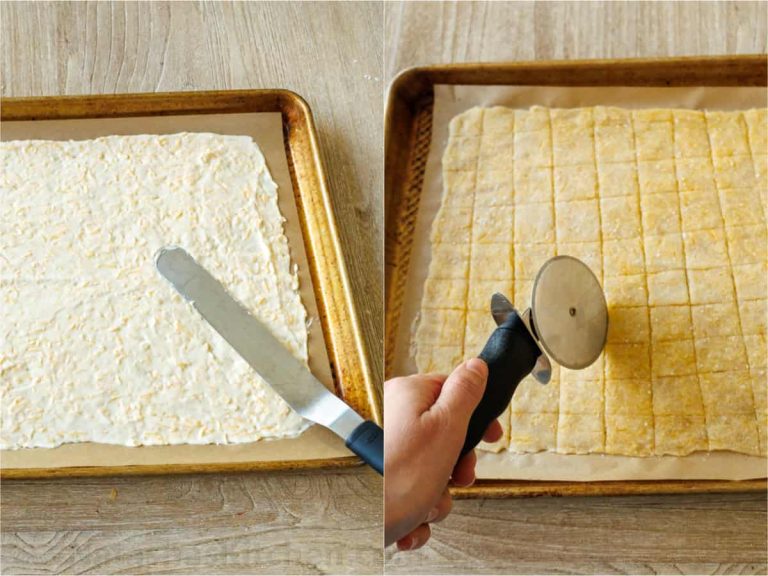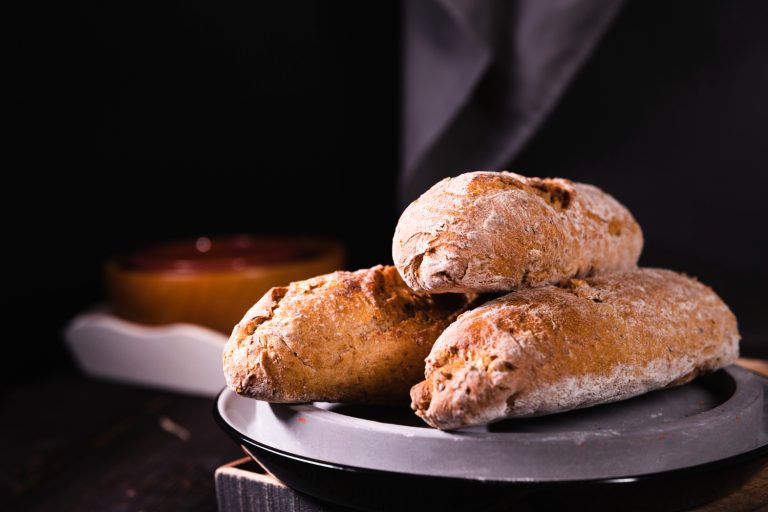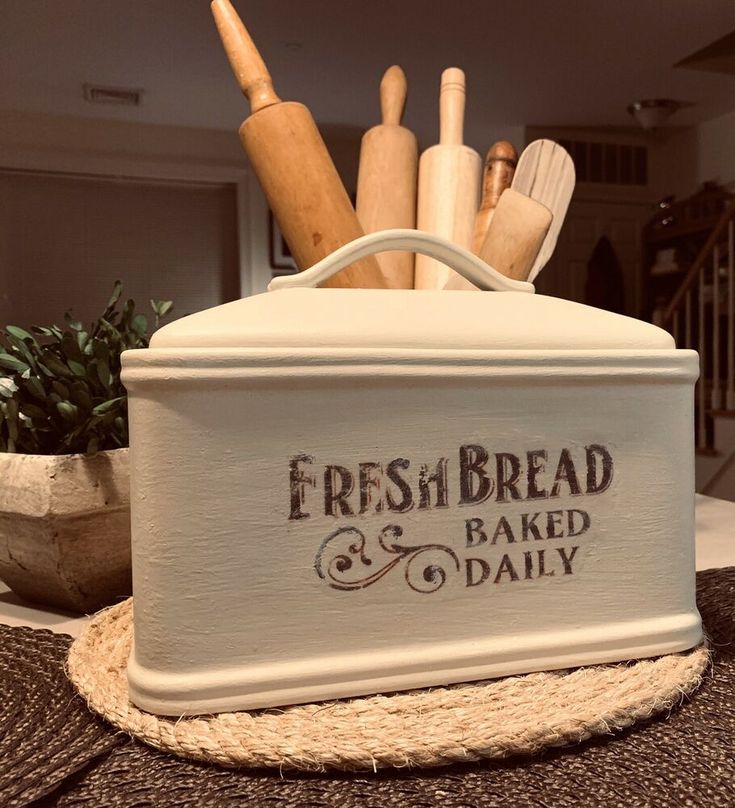How to Perfectly Grill Sourdough Pizza: Temperature and Timing Tips
Did you know 7 out of 10 home cooks burn their first grilled pizza? Their cooking skills aren’t the problem; they haven’t mastered temperature control.
We’ve all experienced it. That perfectly crafted sourdough pizza dough turns black on the bottom while the toppings stay cold. Our countless experiments with grilled sourdough bread and pizza combinations have helped us crack the code to get that restaurant-quality crispy crust and perfectly melted toppings.
Success comes from knowing your grill’s temperature zones and getting the timing right. The proper temperature control turns an ordinary grilled sourdough pizza into a masterpiece, whether you’re using sourdough pizza discard or fresh dough.
Want to improve your pizza skills? Let’s examine the temperature and timing techniques that will make your next grilled pizza perfect.
Understanding Your Grill’s Temperature Zones
Become skilled at controlling your grill’s temperature zones to make the perfect sourdough pizza. With these simple zone techniques, you can turn your grill into a professional pizza oven.
Creating Direct and Indirect Heat Zones
Our grilled sourdough pizza needs two distinct cooking areas. A gas grill works best with two burners on high for direct heat and one side off for indirect heat. Charcoal grill users should rake the coals to one side to create a natural temperature division. This two-zone setup helps you control the perfect crust development.
Optimal Temperature Ranges for Each Zone
Each zone needs specific temperatures to get the best results:
| Cooking Method | Temperature Range | Best For |
|---|---|---|
| Direct Heat | 425-450°F | Original crust searing |
| Indirect Heat | 375-400°F | Topping melting |
| Pizza Stone | 450-475°F | Even cooking |
Note that you should preheat your stone for 30 minutes if you’re using one. This will give a consistent heat spread and prevent sticking.
Using Temperature Zones for Different Pizza Styles
Different pizza styles work better with specific zone combinations:
- Fresh sourdough pizza: Start on direct heat for 3-4 minutes, then flip and move to indirect heat
- Thick-crust pizzas: Use indirect heat mostly, with a quick blast of direct heat
- Thin-crust varieties: Cook quickly over direct heat, then move to indirect heat for toppings
Your success depends on steady temperatures. Don’t open the lid too often, as you’ll lose a lot of heat. These temperature zone techniques solve the most significant problems of burnt bottoms and undercooked toppings that many home-grilled pizzas face.
Mastering Sourdough Pizza Timing
Perfect grilled sourdough pizza depends on the right timing. Proper timing at each stage can transform good pizza into exceptional pizza.
Pre-Grilling Dough Preparation Time
The sourdough pizza experience starts with proper fermentation timing. Summer months require a bulk ferment of 6-8 hours, while winter requires 10-12 hours. Instead of watching the clock, look for a 50-75% volume increase.
These preparation times will give you the best results:
- Original rise: 6-18 hours at room temperature
- Cold fermentation: Minimum 6 hours, up to 3 days in the refrigerator
- Final rest: 30-45 minutes at room temperature before shaping
First Side Grilling Duration
The first grilling phase is a vital step to develop that perfect crust. A minute on the first side at 500°F creates the ideal foundation. You’ll see these signs:
- Golden brown grill marks
- Slight bubbling on the surface
- Firm enough to lift without tearing
Final Cooking Time Based on Toppings
The final cooking phase changes depending on your topping combinations:
| Topping Type | Cooking Duration | Temperature |
|---|---|---|
| Light toppings | 3-4 minutes | 450°F |
| Heavy toppings | 7-10 minutes | 425°F |
| Cheese only | 2-3 minutes | 475°F |
We found a sweet spot—adding cheese in the final 2 minutes prevents burning and ensures perfect melting. The lid should stay closed during the final cooking phase, except once to add cheese.
Take your dough from the refrigerator about an hour before grilling. This helps the gluten relax, making shaping easier while preserving the complex flavors from fermentation.
Temperature Control Techniques
Controlling our grill’s temperature resembles conducting an orchestra—each component must work in harmony. Over the last several years of grilling sourdough pizzas, we’ve developed foolproof techniques for achieving perfect cooking temperatures.
Managing Grill Heat Fluctuations
Oxygen management drives temperature control. Changes in airflow significantly affect cooking temperature. Small, incremental adjustments help maintain steady heat instead of dramatic changes when grilling sourdough pizza. Here’s our tested approach:
| Temperature Issue | Adjustment Needed | Wait Time |
|---|---|---|
| Too Hot (>550°F) | Close vents 25% | 5 minutes |
| Too Cool (<450°F) | Open vents 25% | 3 minutes |
| Ideal Range | 500°F-550°F | Check every 10 minutes |
Using Vents and Lid Positioning
The lid stays closed to maintain a consistent temperature. Our vent control strategy works simply actively:
- Bottom vent: Controls primary oxygen flow (major temperature adjustments)
- Top vent: Fine-tunes temperature (minor adjustments)
- Lid position: Opens only when needed
The perfect grilled sourdough pizza needs the top vent 50% open while we adjust the bottom vent accordingly. This airflow creates that crispy crust we want.
Temperature Monitoring Tools and Methods
Two vital tools ensure precise temperature control:
- Infrared thermometer: Measures surface temperature accurately from -58°F to 932°F
- Built-in thermometer: Provides ambient temperature reading
The infrared thermometer points at the cooking surface every 5 minutes during the first heating phase. This helps achieve that perfect 500°F sweet spot for our sourdough pizza base.
Note that steady temperature is a vital part of the process. Taking extra minutes to reach the right temperature beats rushing and ending up with an unevenly cooked pizza.
Common Temperature-Related Issues
Pizza enthusiasts often struggle with grilling sourdough pizza. Our team has tested reliable solutionsfore temperature-related problems that can make or break your pizza.
Preventing Burnt Crust Problems
A black bottom crust happens because of too much direct heat. The stone temperature should be 450-475°F. Higher temperatures will burn the bottom before your toppings cook properly. Here’s what works best:
- Place aluminum foil under the stone to reflect excess heat
- Lower the middle burner after preheating
- Use fire bricks to create an air gap between the heat source and the stone
Dealing with Undercooked Centers
Three factors typically cause undercooked centers:
| Issue | Solution | Time Adjustment |
|---|---|---|
| Cold Dough | Rest 30-60 mins before use | Add 2-3 minutes cook tof cooking |
| Excess Toppings | Reduce moisture content | Standard cooking time |
| Low Temperature | Increase to 475°F | Reduce by 1-2 minutes |
The secret lies in managing moisture content. Low-moisture mozzarella works best, and we limit wet toppings that create soggy centers.
Adjusting Heat for Even Cooking
The double heat barrier technique delivers perfect results. Position the heat barrier over the coals and create an air space before adding the second barrier. This setup distributes heat evenly without hot spots.
Gas grill users can achieve even cooking by:
- Setting outer burners to medium-high
- Turning off the middle burner
- Rotating the pizza every 3-4 minutes
- Using the lid to keep heat inside
Heat distribution matters more than raw temperature. Our pizzas cook better at a steady 400-450°F instead of maximum heat. This approach gives consistent results every time.
The “dome method” solves slow-cooking toppings. In the final minutes, place an inverted metal bowl over your pizza. This concentrates heat on top and ensures everything cooks perfectly.
Conclusion
The perfect grilled sourdough pizza depends on temperature, timing, and technique. Our detailed guide demonstrates how you can achieve restaurant-quality results at home through proper zone control, precise timing, and careful heat management.
To succeed, you need to pay attention to detail. The optimal temperatures should stay between 425-475°F. Creating distinct heating zones and monitoring the first few minutes of cooking are vital steps. These basics help you avoid common issues like burnt crusts and undercooked centers.
Quality ingredients will make your grilled pizza stand out. Home bakers and restaurant owners can raise their bread and pizza game with an authentic artisanal sourdough starter. The Yeast We Can Do offers a premium starter that delivers perfect tangy flavor and signature crust – email john@heyeastwecando.com to get yours.
Your confidence grows with each pizza you make, and every grilling session teaches you something new about your setup. These temperature and timing guidelines will help you create the perfect combination of crispy crust and melted toppings that make grilled pizza unique.
FAQs
What is the ideal temperature for grilling pizza on a grill?
For indirect grilling, maintain the grill’s temperature between 375 and 400 degrees Fahrenheit to prevent the pizza crust from burning. If using a pizza stone, adjust the grill to a higher temperature range of 450 to 475 degrees Fahrenheit.
At what temperature and duration should pizza dough be cooked?
Thin-crust pizza should be cooked at 500 degrees Fahrenheit or higher, and it usually takes just a few minutes. For thicker crusts, set the grill to 375-400 degrees Fahrenheit and cook for 10 to 20 minutes. Deep-dish pizzas require a lower temperature of 325-350 degrees Fahrenheit and should be cooked for 45 minutes to an hour.
Why does my sourdough pizza crust turn out chewy?
Chewiness in sourdough pizza crust can result from using rotein white flour, typically around 13-14% protein. To achieve a less chewy texture, opt for a lower-protein flour, such as all-purpose flour or Type 00 flour.
What should be the hydration level for sourdough pizza dough?
A 70% flour-to-water ratio is considered quite relatively hyperhydration for pizza dough. The dough may become even wetter if your sourdough starter is also high in hydration. Adjust hydration based on the cooking method and pizza style, such as lower hydration for traditional styles or higher for styles like Detroit pizza when cooked in an indoor oven.






